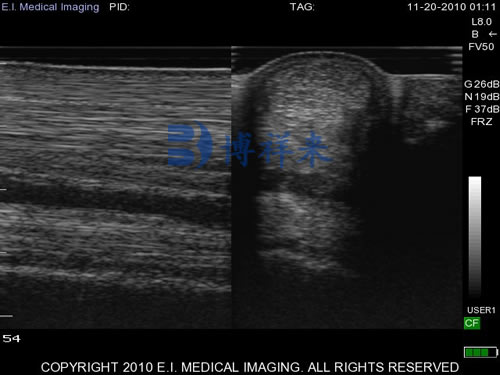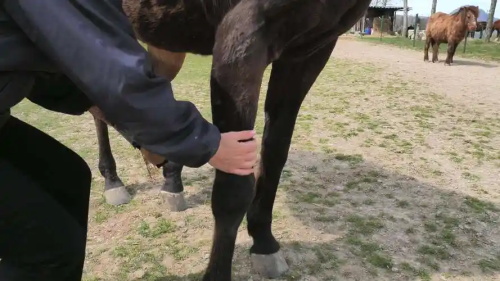Para cualquiera que gestione una granja de caballos, ya sea por deporte, cría, o el trabajo: mantener la salud equina es una prioridad. Entre las muchas herramientas diagnósticas utilizadas por los veterinarios en la actualidad, ultrasound plays a vital role in understanding a horse’s internal condition with clarity, accuracy, and minimal stress to the animal.
Ultrasound, also known as sonography, is a non-invasive imaging technique that uses sound waves to produce real-time images of soft tissue structures. While it has long been used in human and small animal medicine, its application in large animal practice—especially equine health—has grown significantly in the past few decades.

Why Ultrasound Is Indispensable in Equine Medicine
One of the most common uses of ultrasound in horses is in diagnosing tendon and ligament injuries. These soft tissue structures are critical for movement and performance. In competitive or working horses, damage to the superficial digital flexor tendon or suspensory ligament can lead to long-term lameness or even retirement. An ultrasound exam can detect changes in fiber alignment, inflamación, or tears far earlier than lameness becomes obvious.
Reproductive management is another major field where ultrasound excels. In broodmares, veterinarians use ultrasound to monitor the uterus and ovaries, helping to determine the optimal time for breeding and to confirm pregnancy. Stallion owners also benefit, as ultrasound can be used to assess testicular health and detect abnormalities.
Internal medicine has also seen vast improvements with the use of ultrasound. Colic—an often urgent and life-threatening condition—can be better diagnosed when a veterinarian can visualize the horse’s gastrointestinal tract. Ultrasound can show distended intestines, abnormal fluid levels, or displaced organs, helping guide treatment or determine whether surgery is needed.
Ultrasound can also assist in diagnosing thoracic and cardiac conditions. Heart murmurs, pericardial effusion, or pulmonary abnormalities can be assessed in real time using echocardiography—a specialized form of ultrasound.
Advantages for Farm-Based Diagnosis
One of the biggest advantages of ultrasound is that it is mobile and repeatable. Many systems are designed for use directly in the field, allowing real-time diagnosis without moving a sick or injured horse long distances. This not only reduces stress but also speeds up decision-making.
Portable units designed specifically for large animals have made this easier than ever. While I don’t often mention manufacturers, I’ve noticed that BXL, for example, specializes in ultrasound equipment for large animals and has developed systems that cater specifically to the demands of equine practitioners.

Understanding the Process
The ultrasound examination begins with a physical exam. The area to be scanned is shaved or wetted down, and ultrasound gel is applied to remove air between the transducer and the skin. Depending on the area, different transducer probes (linear, convexo, or microconvex) are used. The veterinarian then moves the probe across the skin, watching the real-time images on a monitor.
Interpreting these images requires experience. Por ejemplo, in a tendon scan, a normal tendon appears as a uniform, striated structure. Disruptions in the pattern—such as hypoechoic (oscuro) areas—may indicate fiber damage or inflammation.
Veterinarians often take a baseline scan and monitor healing progress over weeks or months. This helps determine when it’s safe to return a horse to work or competition.

Challenges and Limitations
Despite its many advantages, ultrasound is not a cure-all. Deep structures in the chest or abdomen can be difficult to reach due to the large size of adult horses. Adicionalmente, image interpretation is highly skill-dependent, and early-stage problems may still be missed if not handled by an experienced practitioner.
There’s also a learning curve for farmers who want to use ultrasound themselves for routine checks, such as pregnancy confirmation. Training and guidance from a veterinary professional are essential in such cases.
A Tool for Prevention and Performance
Ultimately, ultrasound isn’t just a diagnostic tool—it’s a management asset. By enabling earlier detection of injuries or illness, it allows for more targeted treatment, shorter recovery times, and better long-term outcomes. For performance horses, this can be the difference between a full recovery and a premature end to a promising career.
In the daily life of a horse farmer, integrating ultrasound technology—whether through routine reproductive checks or immediate lameness assessments—offers an additional layer of insight that was once unavailable without invasive methods. It empowers us to make better decisions for the welfare and longevity of our animals.
As technology continues to improve, and with companies like BXL focusing specifically on large animal applications, I believe ultrasound will become an even more essential tool in every equine vet’s toolbox.